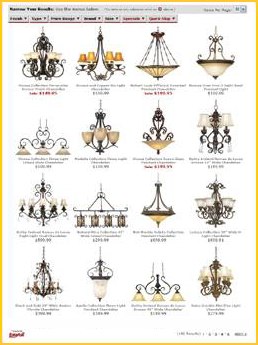If
you've been to any hardware store lately you will notice
such a variety of light bulbs that the choice may seem
daunting. So daunting, in fact, that you may just resort
to your usual, familiar warm white incandescent, with
the resolve to learn more about the different light
bulbs later.
One of the areas of lighting with which you may just be
becoming aware is that of colour temperature. Colour
temperature refers to the colour the light casts. It is
measured in degrees Kelvin (absolute degrees). In an
incandescent bulb, when a piece of metal is heated the
metal emits different colours depending on how hot it
is.
A lower temperature emits
a warmer light (red, orange, yellow) and as the metal
gets hotter, the light it emits changes to white through
blue, which is a cooler light. Although LEDs (light
emitting diodes) and CFLs (compact fluorescent
lightbulbs) don't operate in the same way as
incandescent bulbs, the colours they cast are equated to
the same colour temperatures as incandescent bulbs for
consistency.
Light bulbs are generally available in colour
temperatures ranging from 2700K to 6500K, where the
lower the number, the warmer the light. To give you an
idea of how light colour makes a different, daylight at
noon is approximately 5600K. It is a very bright light
that is excellent for task work, but generally not all
that flattering for general lighting purposes.
Warmer colours range in the lower K scale from 2700K to
about 3500K, whereas cooler, bright white to blue lights
are in the 4100K to 6500K range.
Note that colour temperature is different than a bulb's
wattage which refers to the amount of electricity a bulb
uses to emit light.
If you are looking for general, area lighting, stick to
colour temperatures in the lower range. The softer
yellower light is easier on the eyes and makes people
and clothing look better.
For specific task lighting, however, a higher colour
temperature (4100K-6500K) is better because the cooler,
bluer light contrasts objects better.
Your interior decorating and colour temperature: The
colour temperature of the light bulb can make or break
your decorating scheme in a windowless room or at night.
It's important to select the right colour temperature
light bulb for your room, which generally speaking means
bulbs that cast light in the lower temperature range.
If you're not sure which temperature works best bring
home a few different bulbs from the hardware store to
try out different colour temperatures. You will be
surprised by the change in your wall and furniture
colour a simple light bulb can make.
Cathy Rust writes a weekly column featuring new products
from countertops to flooring, energy efficiency and
green building products and services.
http://www.homestars.com
for more articles.
HomeStars.com is a free website where you can read and
write reviews on home improvement companies in your
neighbourhood.
http://www.homestars.com
Article Source:
http://EzineArticles.com/?expert=Cathy_Rust

